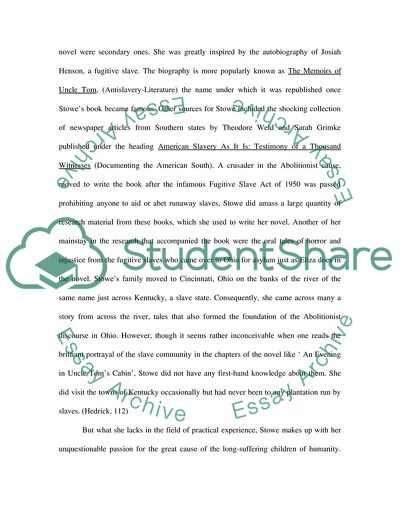Critical Analysis of Uncle Tom's Cabin Research Paper Example | Topics and Well Written Essays - 1000 words. https://studentshare.org/literature/1705677-critical-analysis-of-uncle-toms-cabin
Critical Analysis of Uncle Tom'S Cabin Research Paper Example | Topics and Well Written Essays - 1000 Words. https://studentshare.org/literature/1705677-critical-analysis-of-uncle-toms-cabin.


